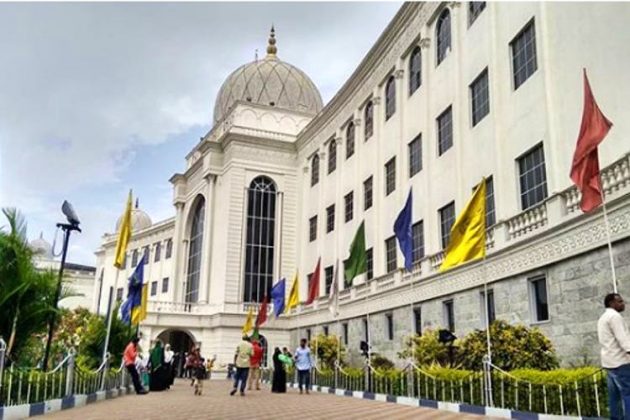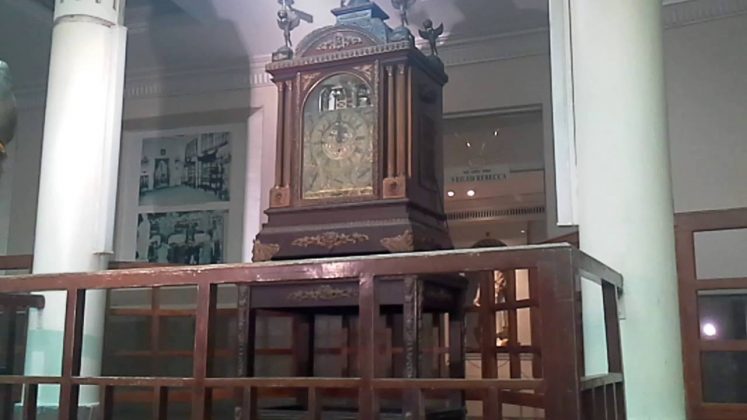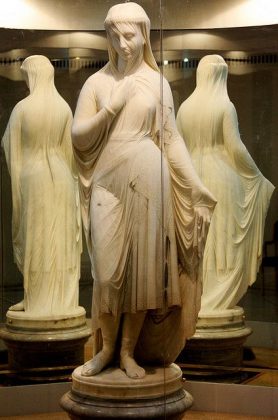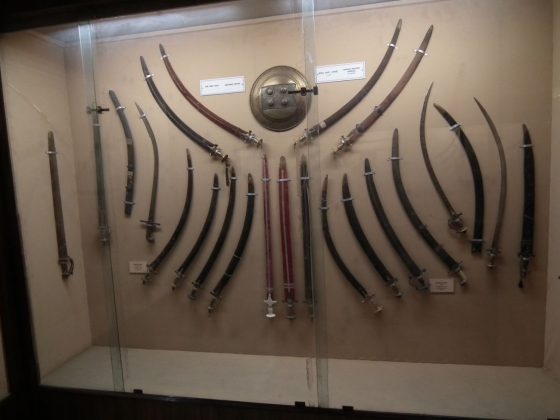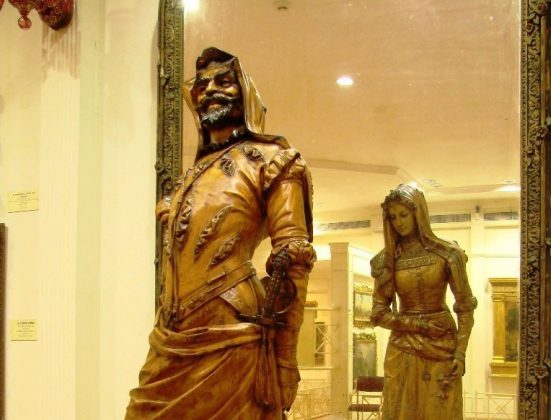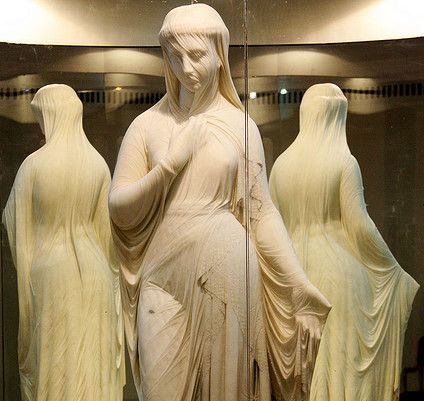
Islamic Art Gallery to further elevate Hyderabad’s Salar Jung Museum

Hyderabad is famous not just for its iconic Charminar, majestic Golconda Fort and lip-smacking ‘biryani’ but also for Salar Jung Museum which boasts of the largest one-man collection of antiques in the world.
Located on the banks of Musi River, Salar Jung Museum (SJM), for its sheer collection of artefacts from around the world, stands tall in this 425-year-old city of pearls, palaces and minarets.
A must on the itinerary of every tourist to Hyderabad, the museum will soon have a new attraction – an Islamic Art Gallery. Given the rich Muslim past of this historic city, it is expected to revive its Islamic touch.
A timeless collection
The artefacts from varied periods of time and places in the world currently on display at 40 galleries of SJM, India’s third largest museum, leave the visitors spellbound.
Though often described as the largest one man collection, the antiques at SJM are actually the collection by three generations of Salar Jung, the title held by a noble family who served as prime ministers of Nizams, as Asafjahi rulers of erstwhile princely State of Hyderabad were known.
The noble family had the zeal for acquiring art objects from around the world. ‘Veiled Rebecca’, an enchanting marble statue on display at SJM, was one such priceless piece of art acquired by Nawab Mir Turab Ali Khan, Salar Jung I from Rome in 1876.
Nawab Mir Yousuf Ali Khan, Salar Jung III, resigned as the Prime Minister of Nizam in 1914 and devoted his life to collect the artefacts from various parts of the world. Majority of nearly 50,000 artefacts at SJM were collected by him.
The museum artefacts are currently categorised as Indian art, Middle Eastern art, European and Far Eastern collection. Galleries exhibit artefacts including the ones that date back to the 4th Century.
The biggest attraction at the museum is 19th Century British Musical Clock. Visitors assemble in the clock hall every hour to watch tiny mechanized figures emerge through a door to strike the toy bell.
The authorities at SJM are now busy giving final touches to the Islamic Art Gallery and planning to thrown it open for visitors in June on the occasion of Yousuf Ali Khan’s birth anniversary.
The largest Islamic exhibit?
It is expected to be the biggest gallery at SJM with 2,500 Islamic exhibits, which are rare and possess great antique, historical, social, cultural and linguistic value. Coming up on over 26,000 sq ft, the gallery will have on display items like weaponry, calligraphy, manuscripts, textiles and carpets, porcelain and glass objects and other pieces of Islamic art. The art objects will also be related to Muslim kings, nobles, poets, historians, writers and kingdoms.
“It will be the best collection any gallery will have in South East Asia. Our Islamic collection is mindboggling. You will not find this sort of collection in any of the Islamic countries,” Nawab Ahtram Ali Khan, a member of SJM Board and a direct descendent of Salar Jung III, told The Federal.
He believes that even people from Middle East will come to see what they have in the Islamic art gallery. The gallery will elevate the museum further as such amount of Islamic art is not housed anywhere in South East Asia.
An enviable museum library collection
The attractions in the gallery will be the early copies of holy Quran from the 6th century and Arabic calligraphy from renowned calligraphers. The pieces which will be on display include a copy of Quran signed by Moghul king Aurangzeb, the oldest folio of Quran on parchment in the ‘Kufi’ script belonging to the ninth century representing rare calligraphy work and the miniature Quran measuring two cm by three cm printed in 31 folios.
The Museum’s collection includes around 365 copies of the holy Quran. While 221 copies consist of the complete sacred text, the rest are parts and fragments of chapters.
A treasure trove of rare books and manuscripts, SJM library has more than 56,000 books and around 9,000 manuscripts in different languages. Visitors will now be able to see all of the 2,600 Arabic manuscript collection, 4,800 Persian, 1,000 Urdu, 25 Turkish and nearly 1,400 lose panels of calligraphy.
The Islamic art objects currently scattered in different galleries or lying in store will be brought under one roof and they will include Egyptian and Syrian collections, 200-odd rosaries and the archer rings of the Moghal king Shahjhan.
The priceless collection will also includes early Astrolabes, the astronomical instruments used to measure time both in day and night. There are inscriptions on stones, semi precious stones, weaponry. “Many of the artefacts are not currently on display in the museum. Nobody would have seen such gallery in their lifetime,” said Ahteram Ali Khan, whose grandfather Nawab Mir Turab Yar Jung was the first cousin of Salar Jung III.
Experts have been working on the Islamic Art Gallery since 2012 and they are trying to ensure that it has an artistic sophistication that is missing in many ancient art galleries in the world. The visitors will also get the facility to flip pages from rare books through a digital display system.
Only British Museum and Victoria Albert Museum in London have Islamic art galleries. Metropolitan Museum, New York, recently opened one.Exclusive galleries are also there in Saudi Arabia and Malaysia but Salar Jung Museum director Dr A Nagender Reddy believes they will be no match to the one coming up at SJM.
One of its kind
“The gallery will be significant as no museum in India displaying exclusively Islamic art. May be in future Middle East countries may be interested to display their art collection through exhibitions. We are expecting good response to the gallery,” said the director.
Every day 3,000 to 4, 000 people visit the museum and on weekends and holidays it goes up to 6,000.
According to Nawab AhteramAli Khan, Salary Jung III Yousuf Ali Khan collected rare pieces of art from around the world. He died a bachelor in 1949, the vast collection of precious art objects and library were arranged in a museum in ‘Diwan Deodi’ to perpetuate the name of Salar Jung as a world renowned art connoisseur.
Pandit Jawaharlal Nehru, the then Prime Minister of India on December 16, 1951, opened the Salar Jung Museum. In 1958, the Salar Jung family donated the entire collection to the Government of India as it felt that only the government can preserve and maintain it.
In 1961 by an Act of Parliament Salar Jung Museum was declared as an institute of national importance and from 1961 affairs managed by the board headed by State Governor.
In 1968, the collection was shifted to a new building constructed on the banks of Musi River.


